One of the most commonly neglected aspects of cycling is the regular upkeep your bike needs to stay in optimal condition. Many riders overlook bike maintenance, but understanding and applying essential Bike Upkeep tips can significantly enhance your cycling experience. Learning these tips not only deepens your understanding of how your bike operates but also equips you to handle basic adjustments and repairs. This knowledge is invaluable in recognizing when professional servicing or component replacements are necessary.
While periodic servicing by your local bike shop is beneficial, consistent, routine care at home will ensure your bike runs smoothly and efficiently between those professional check-ups.
Whether you’re aiming to start cycling on a budget or simply looking to save money, mastering bike upkeep is a financially smart approach. Proper maintenance extends the life of your bike, preventing costly repairs and replacements down the line.
No cyclist wants to be stranded miles from home due to a mechanical issue. From fixing a flat tire to repairing a broken chain, even experienced cyclists can benefit from these essential bike upkeep tips to handle unexpected situations on the road or trail.
In this guide, we’ll cover crucial bike upkeep advice tailored for cyclists with minimal to no prior experience in bike mechanics. We’ll also detail the essential tools you’ll need to keep your bike in top shape.
Gathering the Right Bike Upkeep Tools
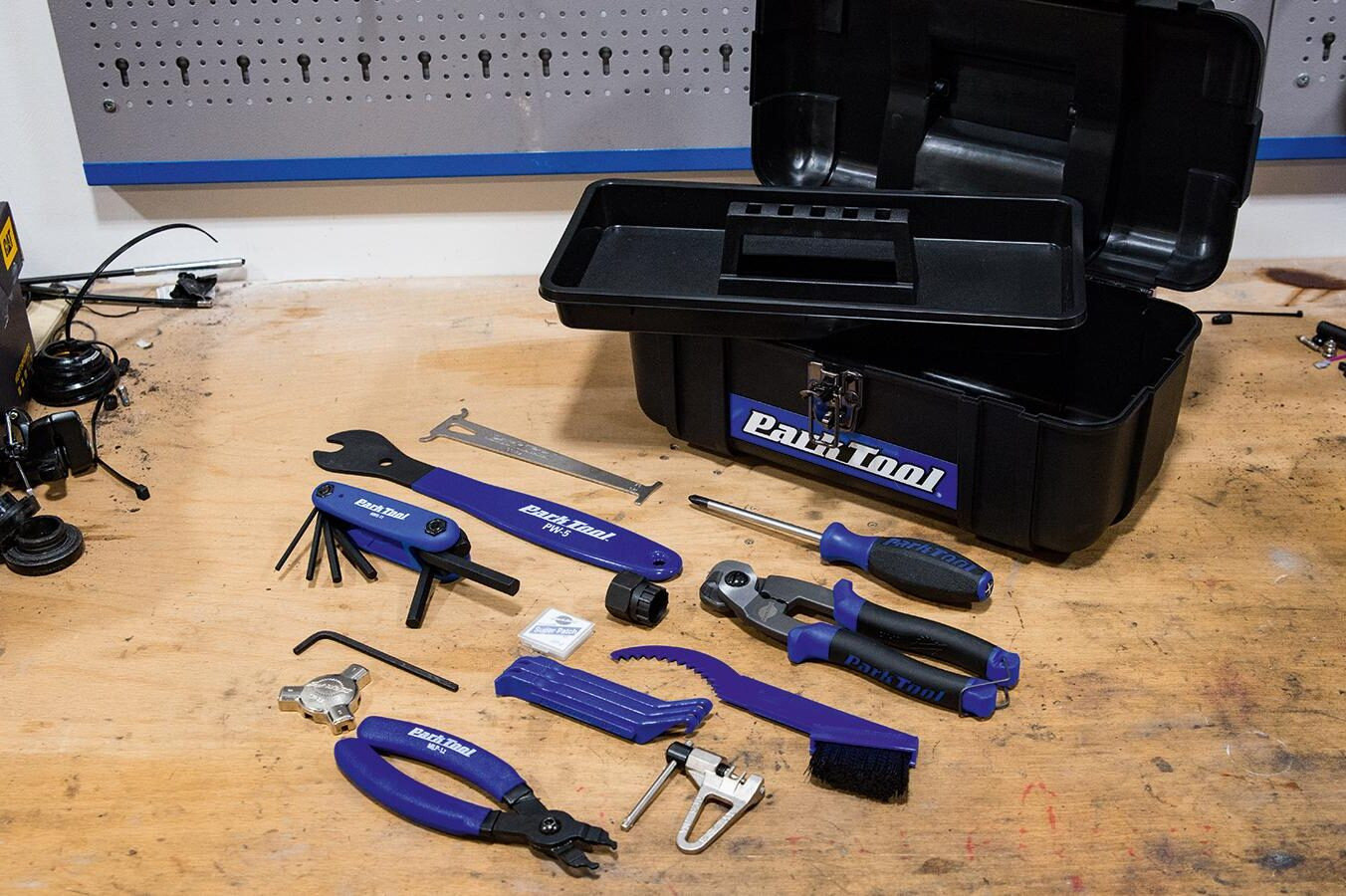 A well-organized set of bike tools, highlighting the essentials for home bike maintenance.
A well-organized set of bike tools, highlighting the essentials for home bike maintenance.
Having the appropriate tools is fundamental when it comes to effective bike upkeep. While you don’t need to acquire everything at once, certain essential tools are necessary to maintain your bike’s smooth operation. Starting your journey in bicycle maintenance begins with assembling a basic toolkit.
While some minor bike maintenance tasks can be performed with common household tools like hex keys, many bike-specific tasks require specialized tools. These tools are designed to make the job easier and more efficient, often preventing damage to delicate bike components.
Investing in quality tools is always recommended. Higher-quality tools not only make maintenance tasks more manageable but also minimize the risk of damaging bolts or components due to poor fit or material failure.
A multi-tool is an excellent investment, especially for cyclists on the go. It’s perfect for carrying on rides for quick adjustments and for basic maintenance at home. However, for more involved tasks, a dedicated set of quality hex keys and other specialized tools are invaluable for providing better leverage and precision.
Consider purchasing one of the best bike tool kits available. These kits typically include most of the tools you’ll need for comprehensive bike upkeep. You might still need to buy a few additional items separately, such as a torque wrench, especially if you work with carbon fiber components.
Here is a list of essential tools to start with for effective bike upkeep:
- Multi-tool: A compact tool for roadside repairs and quick adjustments.
- Bike pump: Include both a track pump for efficient home inflation and a mini-pump for carrying on rides.
- Tire levers: Essential for removing tires to fix punctures or replace tubes.
- Puncture repair kit: For patching inner tubes as a cost-effective alternative to replacement.
- Set of good-quality hex keys (and Torx keys if needed): For adjusting and tightening bolts across your bike.
- Torque wrench: Crucial for bikes with carbon components and recommended for all bikes to prevent over-tightening.
- Chain breaker tool: For chain repairs and replacement.
- Chain checker: To measure chain wear and prevent premature drivetrain component wear.
- Shock pump (for mountain bikes): If your mountain bike has air suspension, a shock pump is needed for pressure adjustments.
Conducting a Regular M-Check for Bike Safety
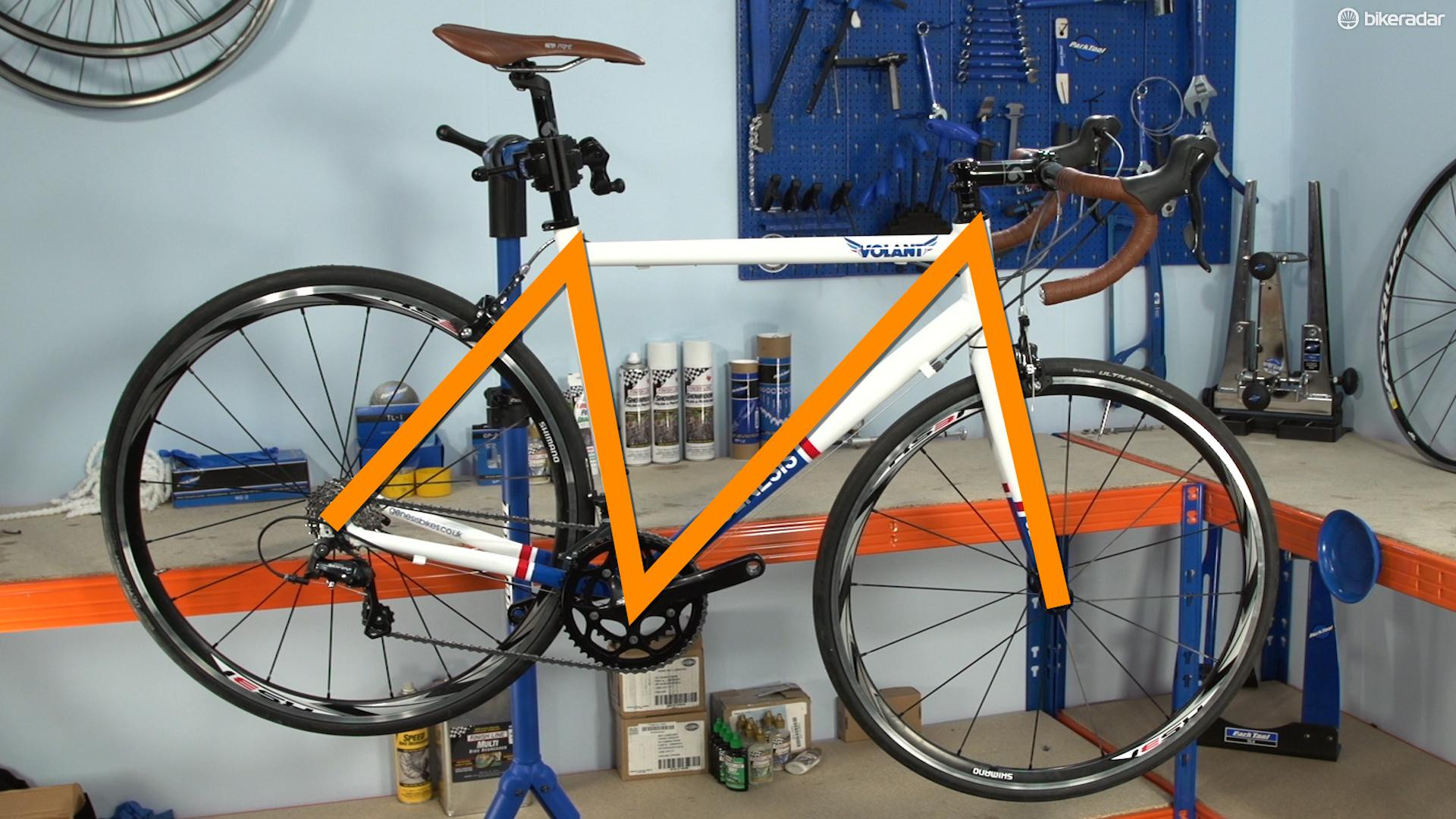 A cyclist performing an M-Check on their bike, highlighting the key areas of inspection.
A cyclist performing an M-Check on their bike, highlighting the key areas of inspection.
The M-check is a fundamental bicycle safety inspection. Named for the ‘M’ shape your hand traces as you move across the bike during the check, it’s a systematic way to ensure all critical parts are in good working order. This bike upkeep routine includes examining tires, wheels, drivetrain, seat, cranks, and cockpit.
Performing an M-check is particularly important if your bike hasn’t been ridden recently or if you are considering purchasing a used bike. It helps identify potential mechanical issues before they become serious problems.
Ideally, an M-check should be performed before every ride. It’s a quick process, taking only a few minutes, and greatly enhances your safety by ensuring your bike is ride-ready.
Mastering Puncture Repair: An Essential Bike Upkeep Skill
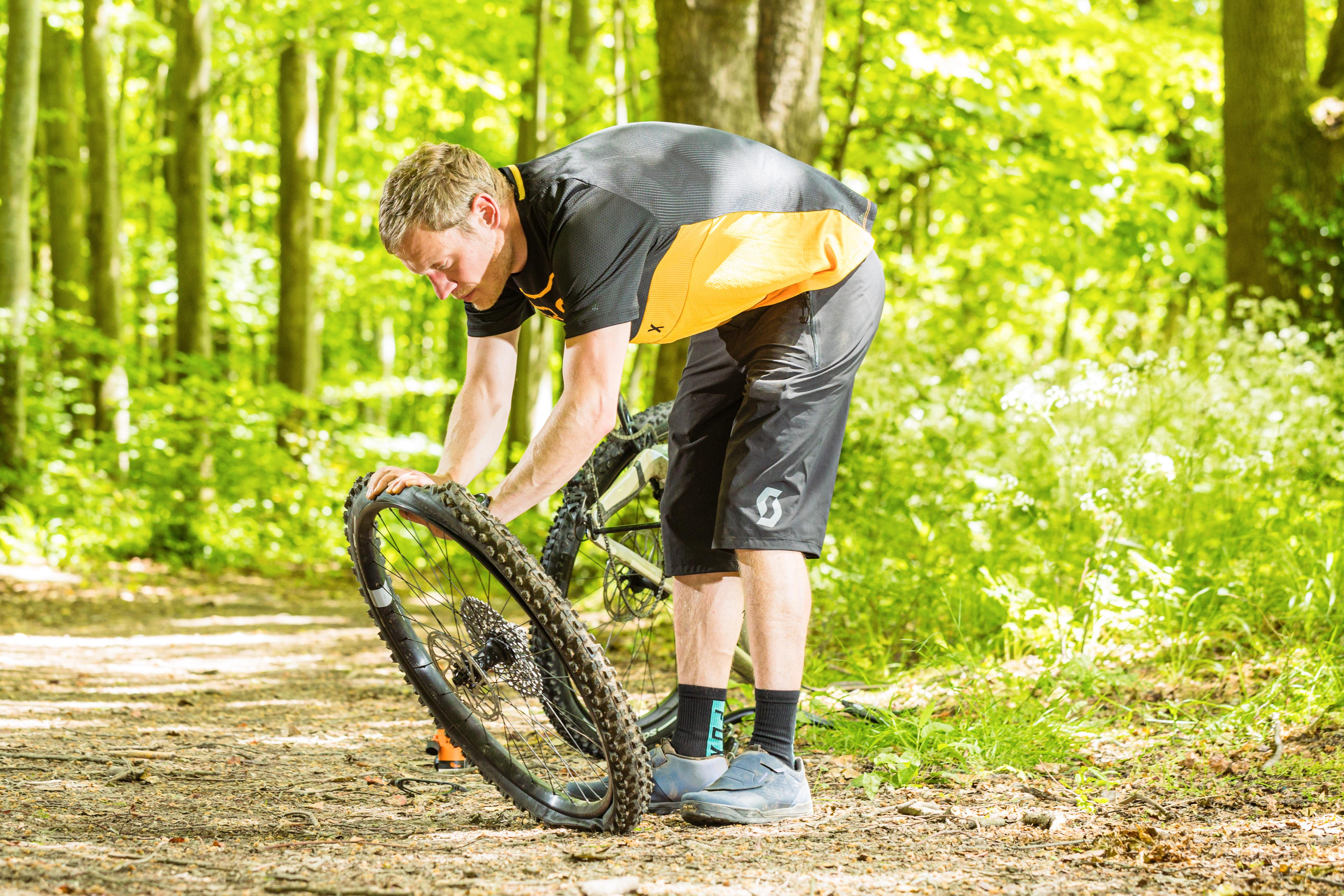 Step-by-step guide to fixing a flat tire, showing tire levers, inner tube, and pump in action.
Step-by-step guide to fixing a flat tire, showing tire levers, inner tube, and pump in action.
Punctures are an unavoidable part of cycling, but knowing how to fix them yourself is a vital bike upkeep skill. Learning how to fix a puncture means you won’t be stranded needing to call for assistance or an expensive taxi when you get a flat tire on the road or trail.
Always carry a spare inner tube and a puncture repair kit on every ride. While a spare tube allows for a quick fix to get you moving again, a repair kit is invaluable for longer rides or if you experience multiple punctures. Repairing a tube with a patch is a cost-effective and environmentally friendly way to handle punctures, saving you from buying a new tube each time.
If you’re unsure about the puncture repair process, practice at home first. Familiarizing yourself with the steps before heading out on a long ride will give you confidence and proficiency when you need to fix a flat tire on the go.
Regularly Checking Tire Pressure for Optimal Performance
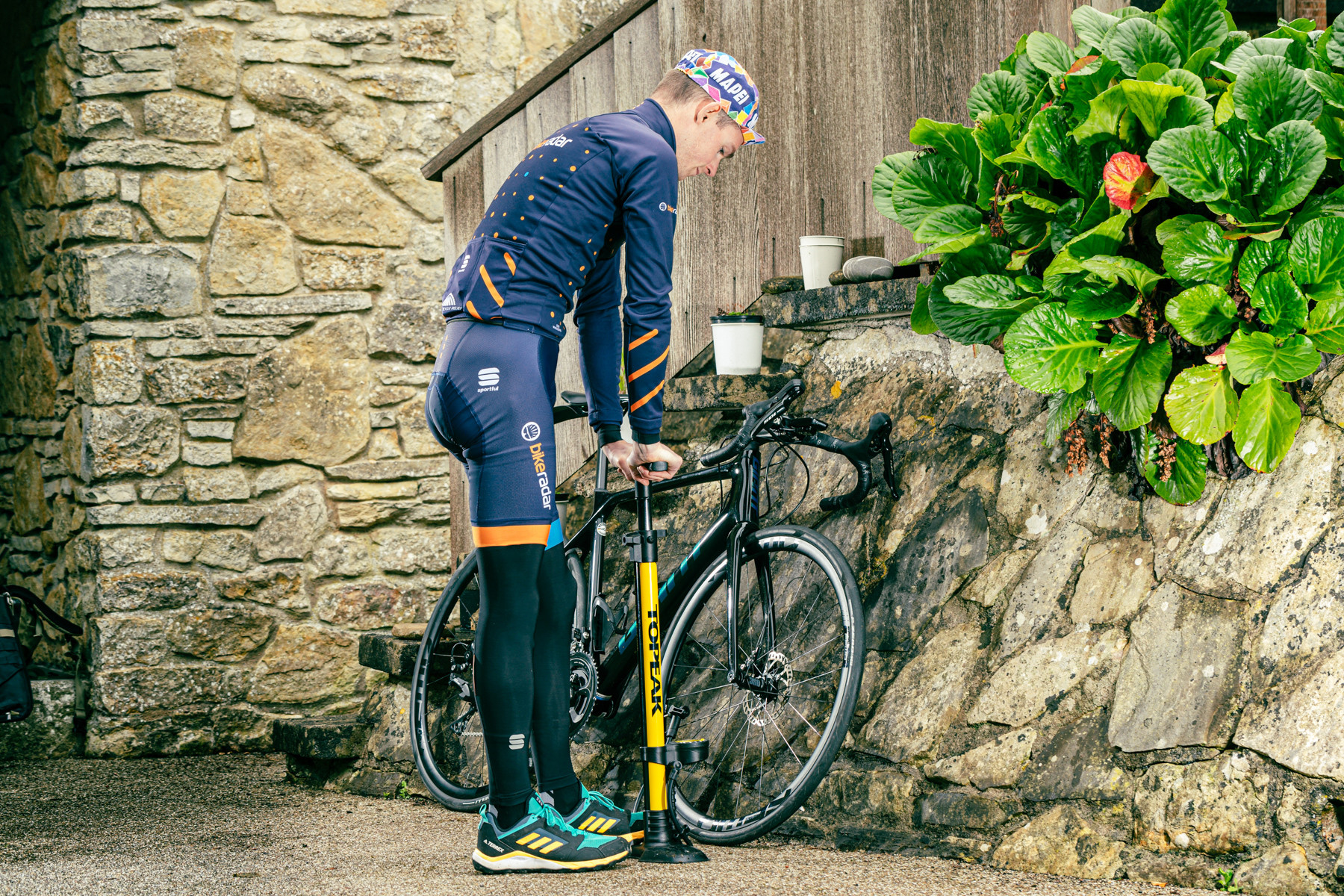 Close-up of a cyclist checking tire pressure with a pump gauge before a ride.
Close-up of a cyclist checking tire pressure with a pump gauge before a ride.
Riding with incorrect tire pressure is a common bike upkeep mistake that can significantly impact your cycling experience. Maintaining proper tire pressure is crucial for comfort, efficiency, and safety.
Under-inflated tires increase the risk of pinch flats and make pedaling harder, while over-inflated tires can reduce grip and make the ride harsh and uncomfortable. Incorrect pressure can also negatively affect your bike’s handling and responsiveness.
It’s best practice to check your tire pressure before each ride. Investing in one of the best bike pumps, ideally a track pump with a gauge for home use and a mini-pump for rides, ensures you can easily maintain the correct pressure.
The recommended tire pressure range is usually printed on the tire sidewall. If you’re unsure, refer to this guideline or use an online tire pressure calculator like Silca’s for more precise recommendations based on your weight and riding conditions.
Keeping Your Bike Clean for Longevity and Performance
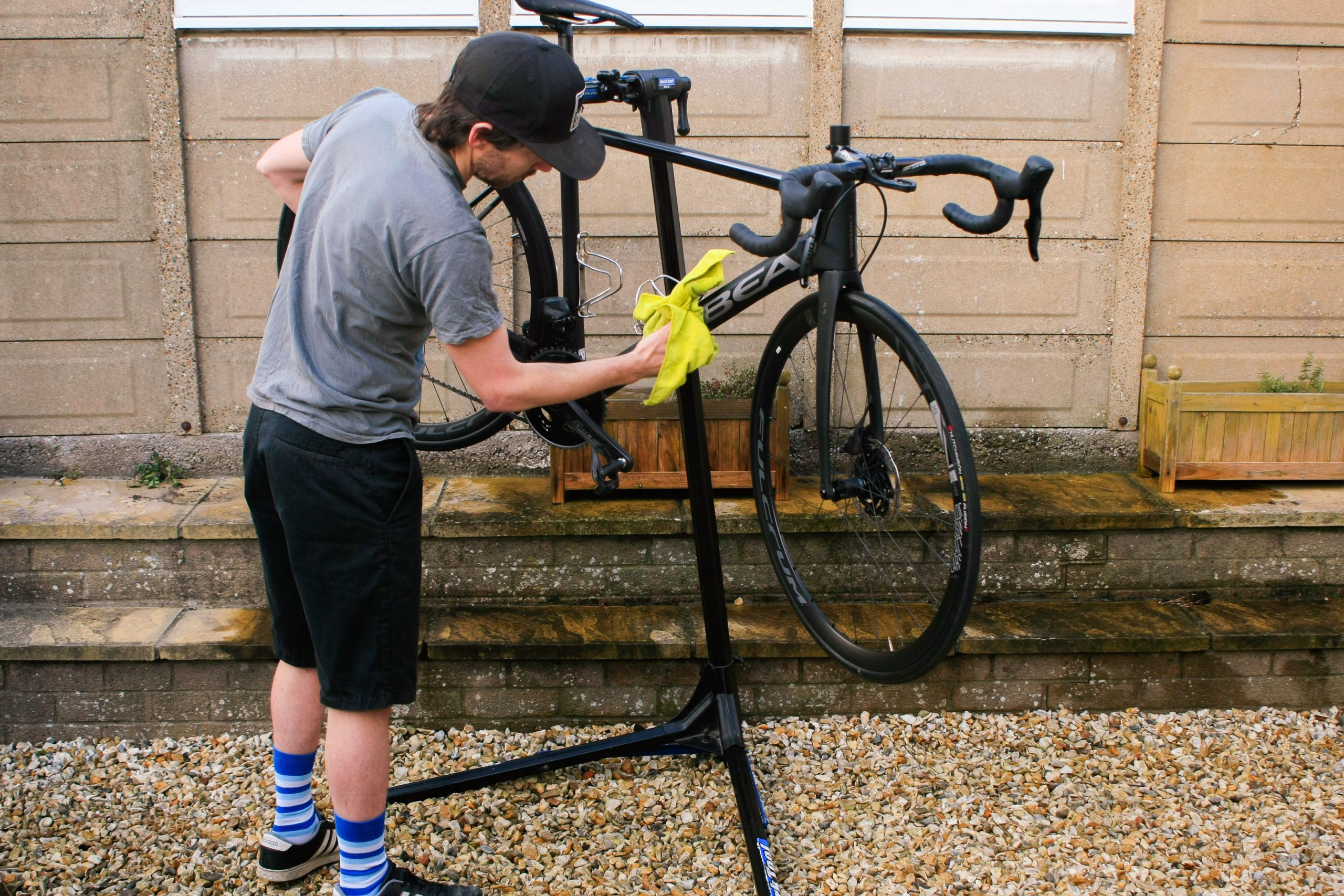 A person cleaning a bicycle with a sponge and bucket, emphasizing the importance of regular cleaning for bike upkeep.
A person cleaning a bicycle with a sponge and bucket, emphasizing the importance of regular cleaning for bike upkeep.
Regularly cleaning your bike is a fundamental aspect of bike upkeep. It keeps your bike running smoothly and minimizes wear on components, preventing premature replacements and costly repairs. Dirt, salt, and road grit can degrade drivetrain components quickly if not properly addressed.
While cleaning your bike might seem like a chore, it doesn’t have to be a lengthy process. Incorporate it into your routine, perhaps right after a ride, to make it less of a burden.
Aim to clean your bike at least weekly during the summer months and more frequently, ideally after every ride, during the winter or in wet conditions.
Start by wetting the bike using a bucket and sponge or a hose. Avoid using a pressure washer as it can force water into bearings and remove essential grease.
Begin by cleaning the chain with a bike-specific degreaser. Allow it to work for a few minutes to effectively remove grime. While the degreaser is working, clean the rest of the bike frame and components with a bike cleaner.
After cleaning, thoroughly dry your bike and apply chain lube to ensure smooth operation and protect against corrosion. Regular chain lubrication is a key part of bike upkeep.
Adjusting Your Brakes for Reliable Stopping Power
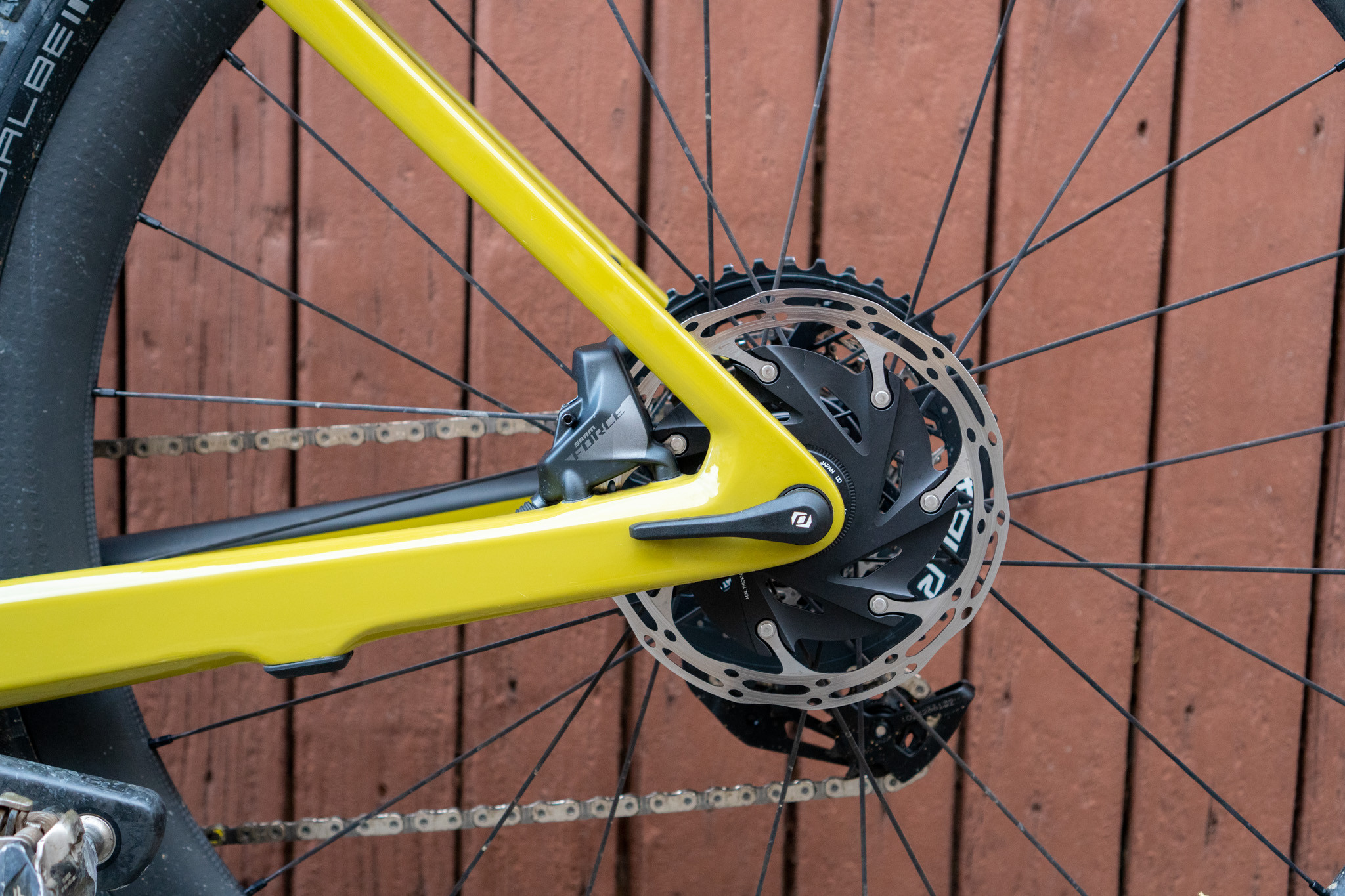 Close-up of brake adjustments being made on a bicycle, highlighting both rim and disc brake systems.
Close-up of brake adjustments being made on a bicycle, highlighting both rim and disc brake systems.
Bike brakes are critical safety components. Proper brake function is essential, and neglecting brake upkeep can lead to serious safety issues.
For bikes with rim brakes, regularly check brake pad wear and replace pads before they become too thin. Also, inspect brake cables for fraying and ensure they maintain sufficient tension. The brake lever should not pull all the way back to the handlebar, as this indicates cable stretch or pad wear.
If your bike uses disc brakes, regularly inspect the disc brake pads for wear and thickness. Use a specific disc brake cleaner to remove contamination and prevent squealing. Contamination can significantly reduce braking performance and cause noise.
Learn how to adjust rim brakes and how to change disc brake pads. These are essential skills for bike upkeep and ensuring your brakes are always in top condition.
Indexing Your Gears for Smooth Shifting
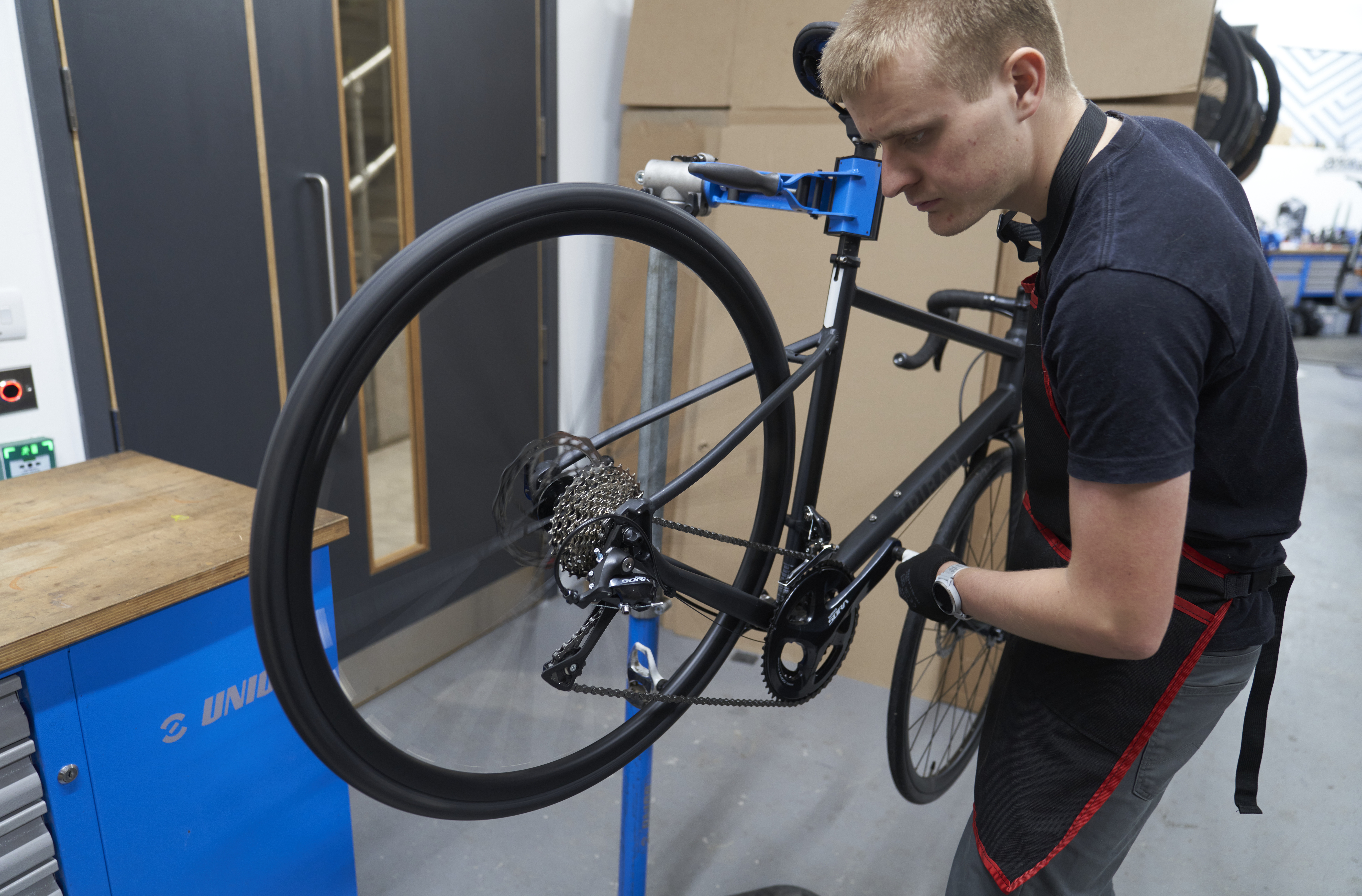 Hands adjusting the barrel adjuster on a bike derailleur to fine-tune gear indexing.
Hands adjusting the barrel adjuster on a bike derailleur to fine-tune gear indexing.
From time to time, you may need to index your gears to correct mis-shifting or excessive noise. Gear indexing is a crucial part of bike upkeep, ensuring smooth and efficient gear changes.
Adjusting your bike’s gears involves several steps, but learning to index them correctly, so they shift smoothly between cogs, is a fundamental skill.
Gear indexing is primarily adjusted using the barrel adjuster. This small adjuster is usually located on the derailleur, shifter, or inline on the cable housing. Most indexing issues can be resolved by making small adjustments to cable tension using this barrel adjuster.
If the chain is shifting off the cassette or chainrings, you might need to adjust the limit screws. However, this is less common and should be considered after basic indexing adjustments.
A useful tip for bike upkeep is to avoid resting your bike on its drive side. Resting it on the side with the derailleurs, cassette, and cranks can bend the derailleur hanger, leading to inaccurate and poor shifting performance.
Checking Your Chain for Wear to Prevent Drivetrain Damage
 Using a chain checker tool to measure chain wear, demonstrating a key step in bike upkeep.
Using a chain checker tool to measure chain wear, demonstrating a key step in bike upkeep.
Your bike chain endures significant stress and wear. Over time, the chain’s pitch lengthens due to wear on the pins and rollers. Regularly checking for chain wear is a critical aspect of bike upkeep. Invest in a chain checker tool and use it frequently to monitor wear.
Replacing a worn chain promptly is essential. If a chain is not replaced in time, it will stretch excessively and begin to wear down the cassette and chainrings on your crankset. This can lead to a much more expensive repair bill for replacing multiple drivetrain components that have worn prematurely due to a neglected chain.
Fixing a Broken Chain for Ride-Saving Repairs
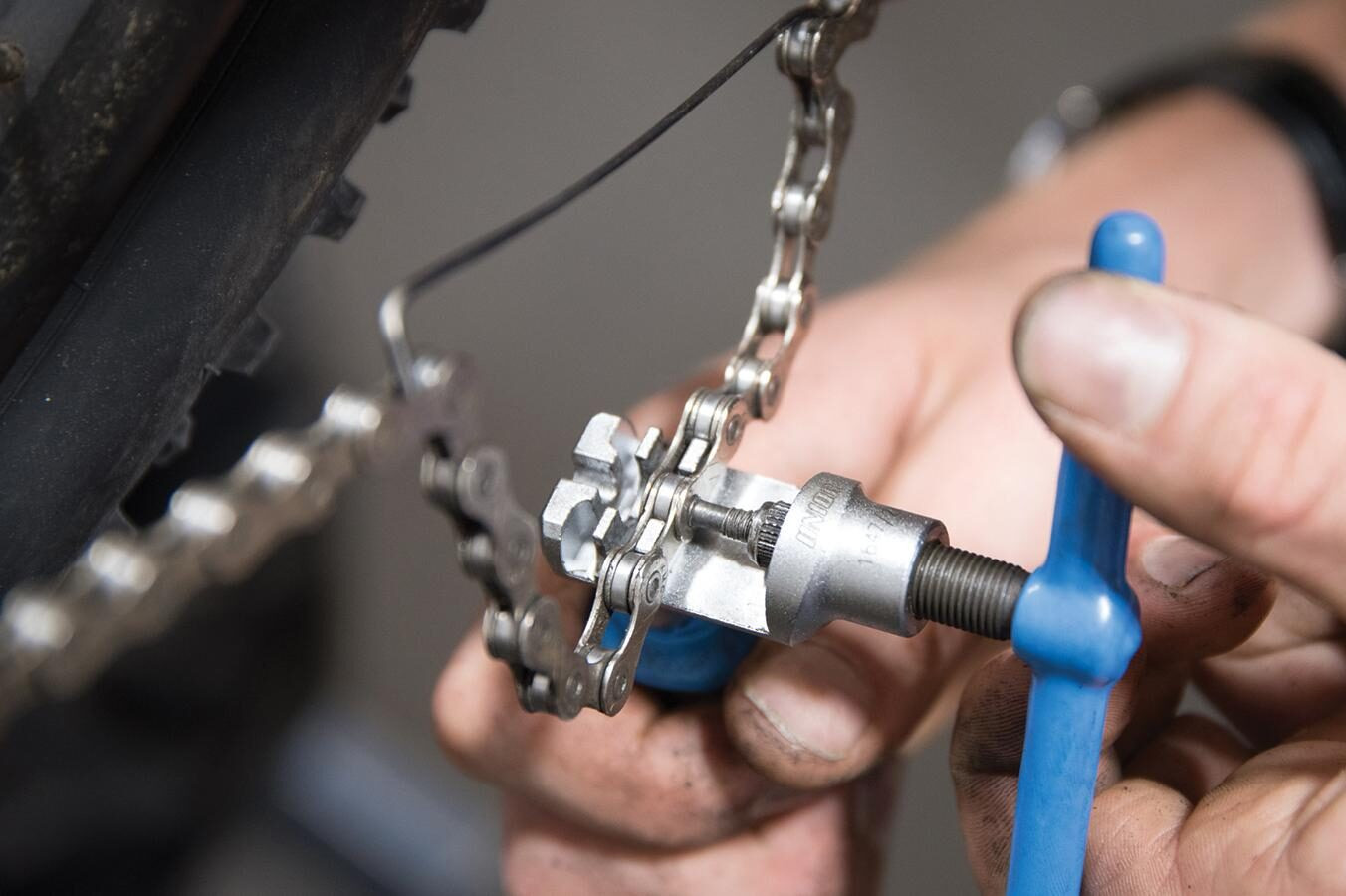 Demonstration of how to fix a broken bike chain on the roadside, using a chain tool and quick link.
Demonstration of how to fix a broken bike chain on the roadside, using a chain tool and quick link.
A broken chain can happen at the most inconvenient times, but it doesn’t have to end your ride. Knowing how to fix a broken chain is a valuable bike upkeep skill that can save the day.
If you break a chain on a ride and the links are not bent, you can repair it by installing a new chain joining pin or a quick link. Carrying a multi-tool with a chain breaker function is crucial for roadside chain repairs.
If some chain links are bent, you’ll need to remove the damaged section to shorten the chain. While this might limit your gear range, it will allow you to ride home or to a place where you can perform a more thorough repair or replace the chain entirely. Learning how to replace a bike chain is a fundamental bike upkeep skill for any cyclist.
Consider Attending a Bike Maintenance Class to Enhance Your Skills
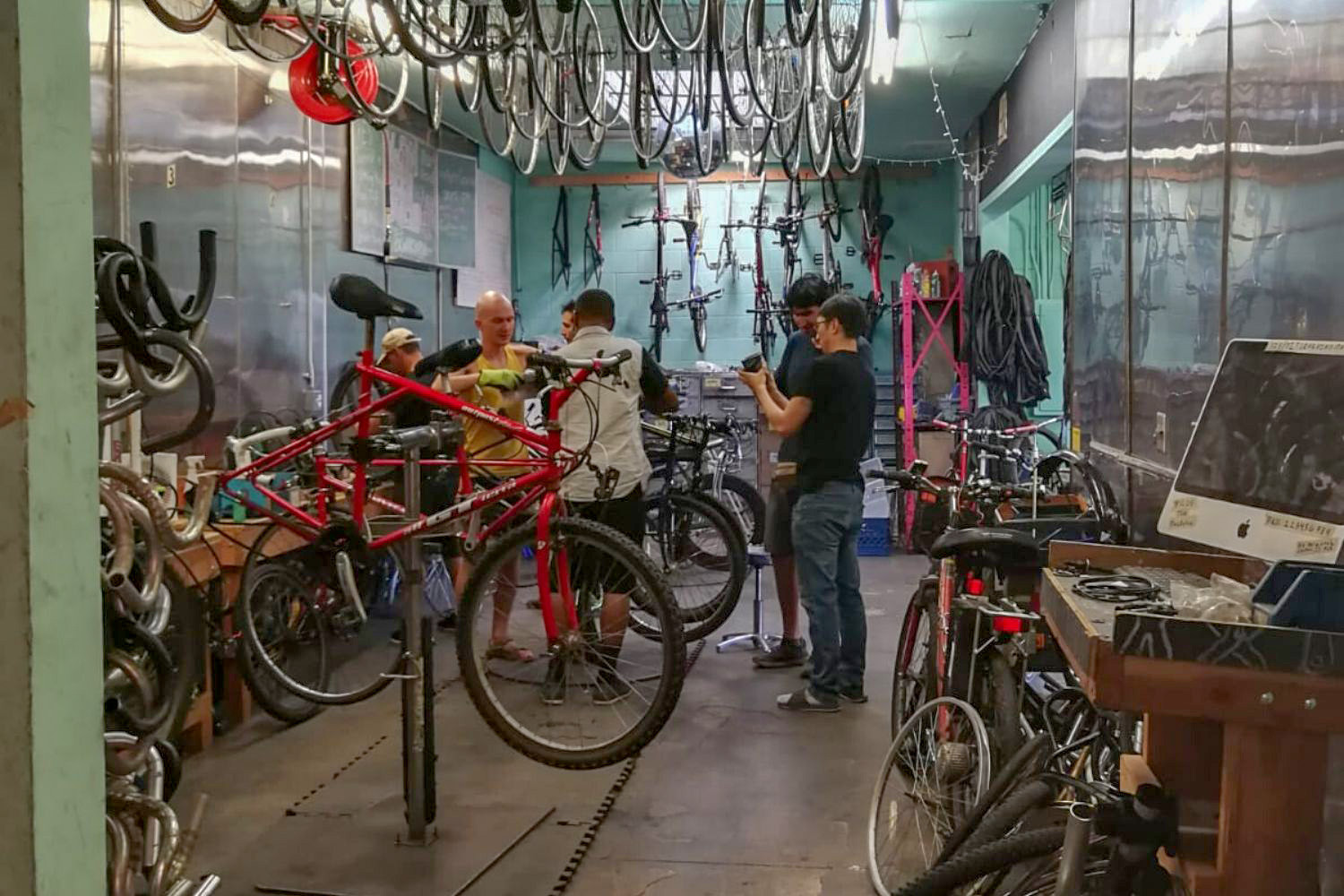 A bike maintenance class in session, showing participants learning hands-on bike repair skills.
A bike maintenance class in session, showing participants learning hands-on bike repair skills.
Attending a bicycle maintenance class is an excellent way to further develop your bike upkeep skills.
Many local bicycle workshops and community centers offer maintenance classes. These classes provide hands-on learning and are a great way to gain confidence in performing more complex maintenance tasks. The mechanics leading these classes are often happy to answer your specific questions and share valuable tips and tricks. Enrolling in a class can significantly improve your bike upkeep knowledge and abilities.
